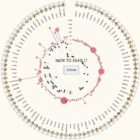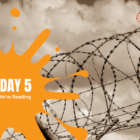Top 10 in Data Journalism
Data Journalism Top 10: COVID’s Psychic Numbing, Disappearing Glaciers, Chemical Weapons, Homeschooling Fatigue, Basketball’s Three-Pointers
|
Homeschooling has presented many challenges to parents and legal guardians of children around the world, with many dissatisfied with the online learning experience. Our NodeXL #ddj mapping from April 26 to May 2 found a piece by Voxeurop highlighting that most people in Europe aren’t keen on their kids continuing to study remotely even if provided with the necessary materials and support. In this edition, we also feature an interactive project by the Guardian exploring disappearing glaciers, a look at Stephen Curry’s remarkable basketball records by The Washington Post, and an archive of publications using data sonification to tell stories.









